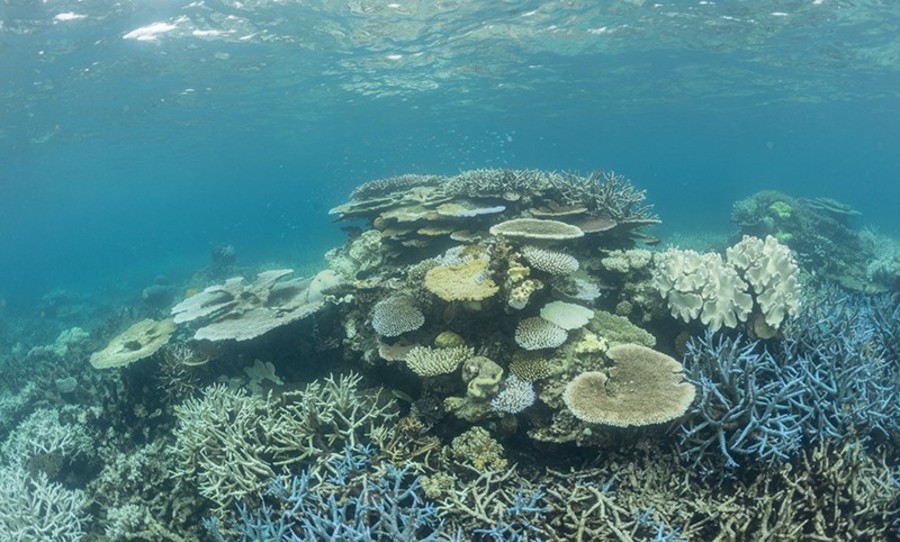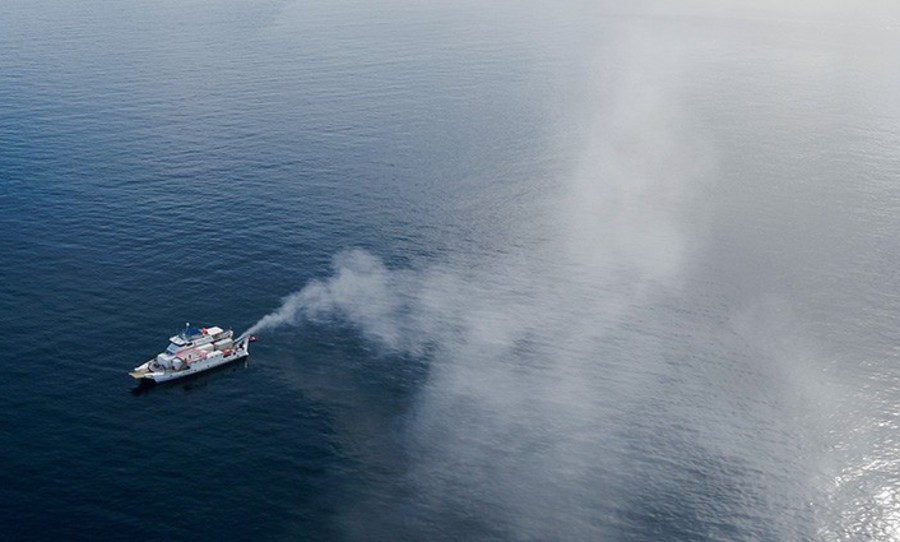The artificial clouds have been created to block sunlight, which could aid the preservation of remaining coral.
More than half of the coral in the Great Barrier Reef has been destroyed due to global warming and climate change.
In an ironic turn of events, the very actions that fuelled the speed of climate change are now being used to frantically rectified by the very perpetrators – humans. Us.

A ferry boat, that usually carries loads of cars and vans, is now being repurposed as a mobile science lab.
Researchers dropped an anchor into a coral lagoon, roughly 100 kilometres from shore, before blowing a mist of seawater off the back of the ferry.
What proceeded was a welcomed surprise – after drifting on the Pacific’s surface, the mist rose to the sky.
If successful, this ‘mist machine’ could help to determine the future of the Great Barrier Reef.
Three-hundred and twenty nozzles of the mobile lab produced a cloud of nano-sized droplets, engineered to brighten clouds and simultaneously block sunlight. This provides a shady respite for coral colonies to grow.
Scientists used sensors aboard the ferry, drones and a second boat to monitor the droplets as they migrated to the sky.
Researchers hoping to restore some balance to the fragile ecology of the Great Barrier Reef experiment with a fleet of COTSbots – technological wisdom at work in the waters! #waterwiseWednesday courtesy of @PlanetGreen Here’s more: https://t.co/TEL4IEAtZh pic.twitter.com/FNVTPaXlSj
— Opelika Utilities (@OpelikaWater) September 5, 2018
Although the experiment was not big enough to significantly alter the clouds, the preliminary results suggest that the technology used might perform much better than initially assumed.
According to oceanographer and engineer Daniel Harrison of Southern Cross University, “We are now very confident that we can get the particles up into the clouds,” he says. “But we still need to figure out how the clouds will respond.”
Mr Harrison’s project is the first field trial of marine cloud brightening.
It links to one of the several controversial geoengineering technologies that have been studied extensively for decades. The research derives from the fear that humans will need to deliberately manipulate the Earth’s climate and its weather systems to deter the severe impacts of global warming.
Mr Harrison’s project has sparked concern amongst some scientists overseas, partially because the Australian group has only minimally published about its work.
Environmentalists outside Australia objected to the concept last year, after word about the first trial was revealed.

Mr Harrison outlines that the cloud-brightening project is focused on local adaptation to climate change and is not targeted at global geoengineering, as its application would be limited in both space and time.
It is also part of a larger ($300m) Reef Restoration and Adaptation Program, which was launched last year by Australia to conceptualise and develop techniques and technologies aimed at saving the world’s biggest reef.
Apparently many of the proposals from cloud brightening to breeding heat-tolerant corals would represent unprecedented human interference in the natural reef system.
However, the Australian government’s motivations in funding this project are under speculation, as Scott Morrison and his government are yet to strengthen their climate ‘pledge’ under the 2015 Paris agreement.
Scott Morrison has personally ruled out committing to net-zero emissions. And let us not forget he fled to Hawaii for a holiday in the midst of Australia burning…
We’ll leave our heads up in the clouds, hoping that this project can undo our past errors, and save our beautiful reef.
With the COVID pandemic raging around the world, not many noticed that scientists just tested a new engineering scheme to save the Great Barrier Reef, which is mostly likely doomed at 1.2˚C warming. First ever outdoor “Marine Cloud Brightening” experiment: https://t.co/B99zqfNvPp
— Hunter Cutting (@HunterCutting) May 15, 2020



